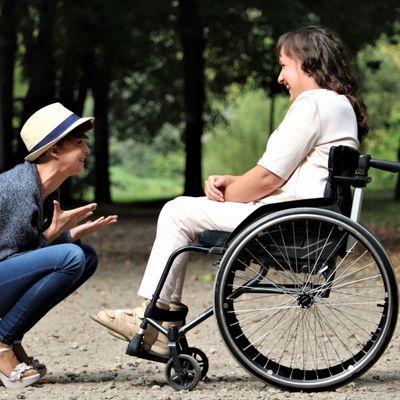Investing in a patient lift is a critical decision that impacts both the quality of care and the safety of patients and caregivers alike. Whether you're a procurement specialist for a healthcare facility or an individual seeking a lift for home care, navigating the myriad of options can be overwhelming. This comprehensive guide will walk you through the essential considerations, from assessing needs and budgeting to comparing models and understanding warranties. By the end of this article, you'll be equipped with the knowledge to make an informed decision that ensures the best possible care while maximizing your investment. Let's embark on this journey to find the perfect patient lift for your unique needs.
The Evolution of Patient Lifts: From Basic Hoists to Smart Care Solutions
The landscape of patient lifts has transformed dramatically over the years, reflecting advancements in technology and a deeper understanding of patient and caregiver needs.
Traditional Patient Lifts
- Basic mechanical systems with limited adjustability
- Manual operation requiring significant physical effort
- Limited weight capacities and mobility ranges
- One-size-fits-all approach to patient handling
Modern Patient Lift Solutions
- Advanced electronic systems with smart features
- Powered operation reducing caregiver strain
- Higher weight capacities and versatile mobility options
- Customizable settings for individual patient needs
- Integration with healthcare management systems
Key Considerations When Purchasing a Patient Lift
Essential Factors for Informed Lift Selection
- Patient Profile: Weight, mobility level, and specific medical conditions
- Transfer Types: Bed to chair, floor to bed, bathing assistance, etc.
- Usage Frequency: Occasional vs. frequent use impacts durability needs
- Space Constraints: Available room for operation and storage
- Caregiver Capabilities: Strength and training of those operating the lift
- Budget: Initial cost, long-term value, and potential financing options
- Power Source: Manual, battery-powered, or plug-in models
- Portability: Fixed installation vs. mobile units for multi-room use
Spotlight on Diverse Patient Lift Solutions

Hoyer Advance-E Power Lift
An electric lift offering versatility for various care settings.
- Smooth electric operation for effortless transfers
- Compact design ideal for home and facility use
- Adjustable features to accommodate different patient needs
- Battery-powered for cordless convenience

Hoyer Manual Hydraulic Lift
A cost-effective manual option suitable for various care environments.
- Reliable hydraulic system for manual operation
- No battery dependency for continuous availability
- Sturdy construction for long-term durability
- Ideal for settings with budget constraints

Bestlift PL350CT Full Body Patient Lift
A versatile lift solution offering full-body support for comprehensive care needs.
- 350 lb weight capacity for diverse patient requirements
- Compact, foldable design for easy storage and transport
- Adjustable base width for navigating various spaces
- Suitable for both home and facility use

Drive Hydraulic Deluxe Silver Vein Patient Lift
A robust hydraulic lift offering reliability and ease of use.
- Durable hydraulic system for smooth operation
- Silver vein finish for an attractive, corrosion-resistant surface
- Adjustable base legs for versatile positioning
- High weight capacity for diverse patient needs
Patient Lifts Across Different Care Settings
1. Hospitals and Acute Care Facilities
In hospital settings, versatile and durable lifts are essential. Look for models with high weight capacities, easy-to-clean surfaces, and compatibility with various sling types to accommodate diverse patient needs.
2. Long-Term Care Facilities
For nursing homes and assisted living centers, consider lifts with long battery life, smooth operation for frequent use, and features that promote resident dignity and comfort during transfers.
3. Home Care Environments
In home settings, prioritize lifts that are easy to operate, compact for storage, and adaptable to the home layout. Portable options may be preferable for multi-room use.
4. Rehabilitation Centers
Rehab facilities benefit from lifts with adjustable features that can support various therapy exercises and accommodate patients at different stages of recovery.
For more insights on how patient lifts are used in various healthcare settings, explore our article on Patient Lifts in Institutional Settings: Hospitals, Nursing Homes, and Rehabilitation Centers.
Challenges and Strategies in Patient Lift Procurement
Purchasing patient lifts comes with several challenges:
Budget Constraints
Balancing quality and features with financial limitations.
Diverse Patient Needs
Finding lifts versatile enough to serve various patient profiles.
Staff Training
Ensuring proper usage and maintenance across all shifts.
Long-Term Value
Assessing durability and future adaptability of lift models.
Strategies for addressing these challenges include:
- Conducting thorough cost-benefit analyses to justify investments in higher-quality lifts
- Selecting models with adjustable features to accommodate changing patient needs
- Implementing comprehensive, ongoing training programs for all staff members
- Considering total cost of ownership, including maintenance and potential upgrades
Choosing the Right Patient Lift: A Step-by-Step Guide
Follow these steps to select the most appropriate patient lift for your needs:
For more guidance on selecting the right patient lift, including considerations for home use, read our article on Choosing the Right Patient Lift for Home Use: A Comprehensive Guide.
Maintenance and Care for Patient Lifts
Proper maintenance is crucial for ensuring the longevity and safe operation of patient lifts:
- Regular Inspections: Conduct visual checks before each use and perform thorough inspections monthly.
- Cleaning: Clean the lift regularly, following manufacturer guidelines for appropriate cleaning agents.
- Lubrication: Keep moving parts well-lubricated as per the manufacturer's recommendations.
- Battery Care: For electric lifts, follow proper charging procedures and replace batteries as needed.
- Sling Maintenance: Inspect slings for wear and tear, washing them according to instructions.
For more detailed information on maintaining your patient lift, refer to our guide on Patient Lift Maintenance: Essential Tips for Longevity and Safety.
Conclusion: Investing in Quality Care Through Informed Lift Selection
Purchasing a patient lift is a significant decision that impacts the quality of care, safety of patients and caregivers, and overall efficiency of healthcare delivery. By carefully considering factors such as patient needs, usage patterns, and long-term value, you can select a lift that not only meets immediate requirements but also adapts to future challenges.
Remember that the cheapest option isn't always the most cost-effective in the long run. Investing in a quality lift with robust features and reliable support can lead to improved patient outcomes, reduced caregiver strain, and lower total costs over time.
As you navigate the selection process, don't hesitate to seek expert advice, request demonstrations, and thoroughly research your options. The right patient lift can transform care delivery, enhancing dignity, safety, and independence for those who need it most.
Ready to Find Your Ideal Patient Lift?
Explore our range of high-quality patient lifts suited for various care needs. Our expert team is ready to guide you through the selection process and help you find the perfect lift for your specific requirements.
Shop Patient Lifts Now








